Genre: Sports Developer: Visual Concepts Publisher: Sega Ent. Players: 1-8 Released: 2001
Sega’s NBA 2K series was a Dreamcast success story, a franchise of sports games so good it made Electronic Arts’ absence on the console feel inconsequential. Supporting innovative mechanics, the NBA 2K series brought a level of realism to basketball video games that hadn’t been felt before. It outplayed its competition out of the conversation on every level, sending other developers to their respective locker rooms to question whether they got outworked or outsmarted. It looked better; It sounded better; The controls were more intuitive. Although no longer a Sega property, to this day, the NBA 2K franchise does everything so good that detractors romanticize parity in virtual hoops on Internet message boards like Cavs fans begrudgingly watching Kevin Durant in a Golden State jersey.
My introduction to the series came in 2001 with NBA 2K1, the first sequel to NBA 2K. I can’t speak on the improvements made from one year to the next but can on the quantum leap in quality from this Dreamcast hoops title in comparison to similar PlayStation and N64 offerings. Though the graphics are dated now, this was the first basketball game where I could distinguish players’ faces and identify who they were by looking at them. I remember playing NBA Shootout on PlayStation and only being able to pick out Dennis Rodman from a crowd because of his bright hair. Also, the dunk animations still stand out to me, even if some of the other movements feel a little jarring today. I remember spending hours in practice mode with Vince Carter just to see all the dunk animations available and grinning every time I would randomly perform a 360.
The Dreamcast games introduced a camera perspective that sits behind the offensive team, shifting around to the other team when possession changes. Though this is no longer the default view in the newer games, I still prefer the “2K” view to this day because of how intuitive it feels. When playing basketball in real life, it’s important to see the court in front of you, looking for open players to shoot the ball. This is the first time in a basketball game where I felt like looking for open players was essential, and I attribute that to what’s now ubiquitously known as the “2K” view. When coupled with the game’s icon passing, this perspective really gives the player the feeling that they’re playing point guard. Still, if you don’t like it, you can change to a more pleasing but less functional side view or a handful of other camera modes.
The post game is largely improved compared to other games of the era. This was when the Los Angeles Lakers were building its dynasty around Shaquille O’Neal dominantly backing down opposition. The game does a good job simulating how helpless you feel as a defender when tasked with holding ground against a stronger opponent. This sequence usually plays out in a couple ways. When the offensive player is stronger, he’ll push his opposition out of the way slowly toward an easy finish. As a defense, you have the option to send a defender to help. Defenders can strip the ball fairly easily when the offensive player starts to post up, though doing this will sometimes result in a foul.
I should also mention the free-throw mechanic. Using the Dreamcast’s pressure-sensitive triggers, players must balance the pressure on each side to successfully make a free throw. How strictly the game enforces this depends on your players free-throw rating. I remember practicing free-throws to the point where this became a big advantage against other human players, and this felt as satisfying as actually practicing free-throws in my driveway for pick-up games.
The crossover selection is sparse but functional. Players like Allen Iverson can drive left and right as well as perform a behind-the-back crossover. Holding turbo while pushing the crossover button will result in a spin move. Attempting to perform this move with large centers results in comically slow twirls. Using the analog stick to control everyone is a breeze, however. NBA 2K1 also features classic players, though not the extent or detail of future games. Classic players are simply rated high and don’t seem to have any defining features or weaknesses.
Though sparse by today’s standards, NBA 2K1 sported an adequate number of modes. This included online play for up to eight players with the console’s 56K modem. I tried this out once in the past, getting severely beaten. This was before I had even heard of the concept of a professional gamer and thought exceptional players were relegated to arcades and malls, not rival living rooms.
Street courses also made their first appearances in NBA 2K1. From a gameplay standpoint, I’ve never been that fond of this mode. It’s too similar to regular exhibition modes in my opinion, but with looser rules. I’ve always felt that the regular gameplay hits the perfect balance of strategy, realism and arcade fun and something feels really off balance when you take the game outside of the arena. It can be fun with a friend, but alone, the other modes simply feel more robust. From a presentation standpoint, this mode is amazing and features recreations of real-life parks. If you’ve read SLAM Magazine or have a shelf full of Rucker Park DVDs, you might have spent some time imagining what these places are like in real-life. This might be your best bet for those don’t live nearby. NBA 2K1 does a good job of breathing life into the environments using immersive city sounds and realistic buildings to set the mood sans repetitive announcer commentary. I’ve seen reviews praise the recreation of specific nearby churches. I’m not familiar with the area, so I won’t make that claim. I will say that do enjoy the level of detail presented here.
I want to give this game a 10 based on the amount of joy I felt playing it when I was a kid. It is cheap saying this having seen the future, but this game had room to improve. However, even as old as this game is, it still holds its own against other newer incarnations in the series, mainly NBA 2K3 and NBA 2K4.
SCORE: 10 out of 10

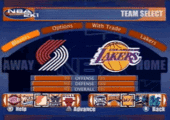
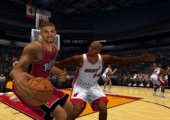
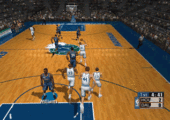
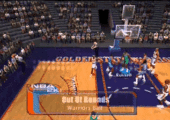
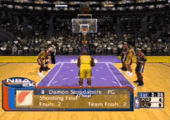
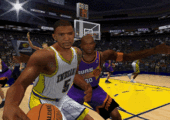
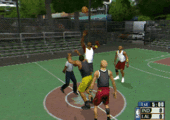
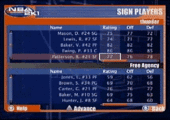
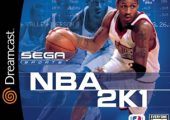
Recent Comments